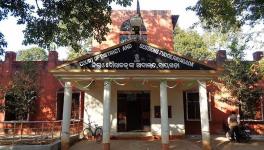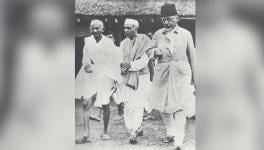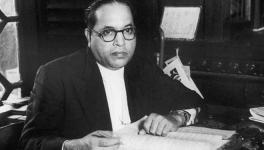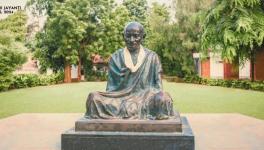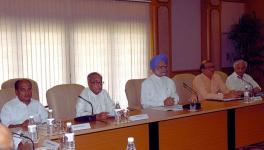BR Ambedkar: The Life of the Mind and a Life in Politics
Dr. Bhimrao Ramji Ambedkar is one of those figures in the history of modern India about whom many people know a little bit, and very few understand anything much. Most educated Indians could tell you that he was a leader of the so-called “low-caste” and “out-caste” communities, called “dalits”, formerly known by the odious and now unconstitutional term “untouchables”. He played a prominent role in the making of India’s liberal Constitution of 1950, as a member of the Constituent Assembly and the Chairman of the Drafting Committee. Fewer Indians might also be aware that Ambedkar founded a sect of protestant Buddhism, called the Navayana, literally, the New Way or the New Vehicle.
In recent years, other highlights of his life, spanning the years from 1891 to 1956, are slowly becoming common knowledge — that he was very highly educated, with graduate degrees from Columbia University and the London School of Economics; that he was a scholar as much as a politician, and wrote several learned books; that he was a younger contemporary of Gandhi, and that the two did not see eye-to-eye. The phrases “founding father” in the American sense, and “maker of modern India” have become popular in the last 5-7 years, signaling — without really substantively deepening — our casual perception of his historic role. Those who follow him, as dalits, as Neo-Buddhists, as political activists — the faithful, if you will, whatever the reason for their adherence to his persona and his ideas — refer to Ambedkar as “Babasaheb”, an address used with as much respect and affection as “Mahatma” and “Bapu” for Mohandas Gandhi.
Not everyone knows much about Ambedkar, but many who do know of him believe in him passionately, and speak of him with the kind of fervor normally reserved for religious figures — prophets, saints, those who uttered revelations and those who brought deliverance. Babasaheb Ambedkar is one of the most luminous figures in modern Indian history, and it is about him that I set out to write a book. The title of my chapter, “The Life of the Mind and a Life in Politics”, reflects a dilemma that has dogged me for a while now, which is, should my book be an intellectual biography or a complete biography? I have vacillated between these two options, and as a result made very little progress on either one. The problem of course is that both kinds of biographies, intellectual and political, are equally possible to write.
We have to produce or at least approximate to the music that was this particular human existence, with its duration, with its pattern, its crescendos and silences.
There are many viable ways to tackle a life such as Ambedkar’s. One could for example go systematically through all the books that he wrote, on topics as varied as the evolution of the caste system, currency and finance in British India, Pakistan and the Partition of India, Buddhism, Untouchability, comparative constitutionalism, minorities and federalism, and numerous other subjects in culture and politics, anthropology and history, law and jurisprudence, religion and society. The breadth of his interests and the depth of his knowledge were truly astounding. One might equally chart a life decade by decade, from the 1890s to the 1950s. Ambedkar’s personal narrative can be braided together with important episodes in the history of Indian nationalism, as well as the interventions of other significant figures of the times. Events in which he intersects with India’s political history during this tumultuous period could easily be made to act as the vertebrae in the spine of my account.
One conceivable approach that is au courant is to build an entire life around Ambedkar’s disagreement with Gandhi, an inter-personal conflict between two giants of the age that adumbrates and highlights much of the debate about how to address social inequality and how to ensure social justice in India throughout the 20th century and into the present moment. But here’s the thing: My experiments with biography as a genre (that as an intellectual historian I am not necessarily familiar with or adept at), have led me to the realisation that just because the elements of a life could be ordered in a certain way, doesn’t mean that that order will yield any special insight into the significance of this life. Mere viability is an insufficient criterion for this or that arrangement of constitutive elements.
What we need is to be able to grasp the intrinsic raison-d’être of this person’s life as a historically consequential narrative. We need a structure that is true, not just to the sequence of veridical events that unfolded for and around this man in homogenous empty time, but true more importantly to the character of this man — that is, to his motivations and ambitions, his capabilities and shortcomings, his failures and achievements. We need to be able to pick up an inanimate archive and make it sing, like a properly tuned musical instrument; we have to produce or at least approximate to the music that was this particular human existence, with its duration, with its pattern, its crescendos and silences. For long the music of Ambedkar’s life had eluded me entirely.
In recent years I have made every possible type of chapter outline and bibliography, written multiple grant proposals and fellowship applications, typed out book summaries and conference papers, but in my head I just couldn’t hear what a life of Ambedkar would sound like. What would be its major notes and minor keys? How would it resonate with the questions that are most important for Indian modernity, democracy, equality and justice? And even more crucially, what would Ambedkar’s life in my telling add to the quest for human flourishing that we all hope guides in some very fundamental way our scholarly efforts and literary endeavors?
* * *
Ambedkar’s life was punctuated by a series of setbacks and disappointments, each of which propelled him towards loftier goals, more difficult challenges, and stronger assertions of the will to overcome inimical circumstances and an hostile world. He was born in April 1891 in the Mahar caste of Maharashtra, in Western India. This made him, in the still traditional Hindu environment of the late 19th and early 20th centuries, an “Untouchable”. He was gifted with extraordinary intellectual powers, an ambitious father, encouraging teachers, and a royal benefactor, which together ensured that he went to college in Bombay and then won a scholarship to Columbia University, a first for anyone of his background.
But despite these talents, advantages and lucky breaks, and despite his innate drive, Ambedkar’s childhood and early youth were marred by visceral experiences of the prejudice, bigotry and violence of an untouchable existence. He couldn’t sit next to his upper caste classmates; he was denied food and water for long days at school because his very touch was considered polluting; he was not permitted to study Sanskrit at university because of his ritually debased caste status (and instead majored in English and Persian); and his everyday life was riddled with the insults, segregation and physical abuse that was routine for members of his caste.1 Nevertheless, at the recommendation of a couple of his brahmin professors, the scion of the nearby princely state of Baroda, the Gaekwad Maharaja, decided to fund his higher studies. In the late summer of 1913, the young man found himself in Morningside Heights, on West 114th street between Broadway and Amsterdam in New York city, very far indeed from India and its cruel and senseless humiliations.
Ambedkar’s childhood and early youth were marred by visceral experiences of the prejudice, bigotry and violence of an untouchable existence.
With the perseverance and grit so characteristic of his temperament, Ambedkar raced through an MA and a PhD in anthropology and political economy, writing Masters and Doctoral theses that would in very short order be published as his first scholarly article and book respectively.2 His advisor was one Edwin Seligman, but as luck would have it, who should be teaching on Columbia campus but John Dewey, the great American educationist, pragmatist and liberal philosopher who was associated initially with the University of Chicago (1894-1904). Details of their initial encounter are not known and cannot be reconstructed, thanks to a lacuna in the archive that I will explain ahead, but Dewey remained a part of Ambedkar’s thinking and life all through. The two men died two years apart, in 1954 and 1956 respectively: Dewey very old, and Ambedkar only 65 years of age. Ambedkar’s amazing progress sent him next to the LSE, where he began a second MA in the fall of 1916.
In 1917, Ambedkar was abruptly summoned back to India. It seems the Gaekwad had all along intended his scholarship as a loan, to be repaid through service in the Maharaja’s employ. Ambedkar was understandably unhappy to have his studies rudely interrupted, and his bursary recast as a debt. He booked his luggage on a separate ship than the one he was on from London back to Bombay, and as it happened that other vessel was torpedoed by a German submarine, taking with it his entire painstakingly built library, all his notes, papers and writings, and even his doctoral thesis at Columbia which he then had to rewrite for the final award of his degree.3 (This is why we don’t know much about his years in New York except from whatever little he may have said about that time later on). He was rudely reminded of a dependent family back at home — his father had died, and he had a young wife and child (Ambedkar had been married off, as was customary in those days, at the young age of 14 or 15 to a girl of 9, back in 1906, 11 years earlier).4
Things only got worse, though, when he arrived in Gujarat to serve as the Maharaja’s military secretary. No one would rent him a room or a house; no one wanted to share office space with him; once more he got no water to drink nor tea, nor lunch with colleagues nor dinner from his landlord (who only admitted him to his boarding house under a false identity as a Parsi gentleman).5 He couldn’t even get a lamp at night to be able to read in his room after the workday was done. For all his qualifications as the most educated individual in the whole principality of Baroda, he was right back where he had started — an Untouchable.
The story is that one day he was discovered and thrown out of his hostel, and spent the night in a municipal park, under a tree, burning with humiliation very much like the young Gandhi 30 years earlier who was off-loaded from a train at Pietermaritzburg station in Natal, South Africa, on a winter’s night in June 1893 for being a black man — even if a qualified lawyer and the owner of a first class ticket. Gandhi had faced the white colonial master’s racism; Ambedkar was insulted by his fellow-Indians, fellow-Hindus. Neither man ever forgot the lesson he learned on that fateful night, and both these experiences proved to be life-changing in each case.
Angry and frustrated, Ambedkar quit his job and went back to Bombay to rejoin his family. Fortunately he was appointed a professor of political economy at Sydenham College and in 3 or 4 years saved enough money to go back to London to resume his studies. Between 1920 and 1923, he earned a second MA and a second PhD at the LSE, as well as a law degree from Gray’s Inn in London.6 He even spent a few months at the University of Bonn, in Germany. He enrolled for a PhD — his third! — in Economics, but he really wanted to go there because it was a great European centre Indology — the very same subject he had been disallowed from studying as an undergraduate 15 years earlier because Sanskrit was supposedly off-limits to persons of low caste.7
This over-compensation reveals the extent to which he took his shoddy treatment in India to heart, and also suggests a desperate desire not to have to go home and deal with the reality of discrimination that wasn’t going anywhere no matter how firmly Ambedkar turned his back, no matter how high above his birth he climbed through the sheer dint of hard work. Later on in one of his writings he described Hindu society as a tower divided into floors of caste, without windows to look out and without stairs to carry one up or down from the level at which one happened to be born.8 He could have added that there were no doors, either, for entry or exit. By mid-1923, Ambedkar really did run out of time and money, and came back to Bombay.
In one of his writings [Ambedkar] described Hindu society as a tower divided into floors of caste, without windows to look out and without stairs to carry one up or down from the level at which one happened to be born.
In the remainder of the 1920s, the ridiculously over-qualified 32-year old was called to the Bar, started a practice at the Bombay High Court, began publishing his various scholarly dissertations, was appointed professor at the Government Law College where he would eventually become a named chair and later Principal, was nominated to the Bombay Legislative Council9, and ran more than one popular journal10 and community organisation11 dealing with the rights of Untouchables. He became the face of a social group that was at last awakening to its political identity — but really, he was the one who, almost single-handedly, was defining the contours of this identity and aggressively politicising it, at least in the city of Bombay and in the broader context of the Bombay Presidency. It was as though he was determined to deploy the surfeit of his own qualifications and capabilities to make up for the collective backwardness, reinforced by centuries of oppression, of his most wretched brethren.
Ambedkar launched a series of agitations, mobilisations and campaigns to demand that Untouchables be allowed to access public goods like drinking water from tanks and wells; that they be allowed to move freely and in a dignified manner, without threat to life or limb in public spaces like roads and parks; and that they be granted entry into sacred temples to exercise the right to worship therein just like other Hindus.12 Predictably, caste Hindus, even liberal, educated and Anglicised urban people, were intransigent. Ambedkar would take one step forward and have to backtrack two steps — temples were claimed to be private property; tanks were ritually “purified” after Untouchables had taken water from them. In December 1927 he publicly burned a copy of an ancient Hindu scripture, the Law Code of Manu, which enshrines the archaic punishments and prohibitions against low castes and Untouchables in the holy language of Sanskrit.13
This period is critical because Ambedkar had to walk a fine line between, on the one hand formulating and voicing the needs of his desperately poor and almost entirely illiterate community, not only to others but also in many ways to the very people whom he was leading and representing; and on the other hand, chiming in with the broader anti-colonial sentiment that was mounting by the day, thanks to the Indian National Congress, whose leadership happened to be entirely upper caste and upper class, but not its following, which was genuinely massive and cut across all sections of society. Ambedkar also had to work with the British authorities, howsoever unpopular this may have made him with the nationalists, if he felt that this was the best course of action to protect the interests of the Untouchables. The British in turn were cautious with him, and frequently rewarded him for his cooperation with them even in an atmosphere of strident anti-colonialism led by hugely charismatic figures like Mahatma Gandhi and Jawaharlal Nehru.
By 1935, Ambedkar was done with civil disobedience, with negotiation, with compromise. From his perspective, all tactics to claim and gain basic minimum dignity for Untouchables had failed. The caste system could not be cleaned up — it had to be annihilated.
Thus Ambedkar found himself giving evidence before various government commissions and committees, introducing radical bills in the Bombay Legislative Council, and appointed as the representative of the Untouchables at the three historic Roundtable Conferences held between 1930 and 1932 to enable the British, the Congress and other third parties, like himself, to sit down and discuss increasingly voluble Indian demands for self-determination. Matters came to a head when Ramsay MacDonald proposed a “communal award”, creating separate electorates for Muslims on the one hand and Untouchables on the other. Ambedkar was in favor; Gandhi was opposed. Ambedkar saw Untouchables as a type of minority, like Muslims; Gandhi felt that British machinations had already divided Indians into Hindus and Muslims, and now threatened to further break Hindus up into upper castes and so called “depressed classes” or lower castes and Untouchables. Neither man yielded.
Gandhi raised the stakes by going on a fast unto death if his views were not respected. He pledged to educate, harangue and shame caste Hindus until they ceased and desisted from practicing Untouchability. He proclaimed himself the spokesman of Untouchables. Public opinion and political pressure were unequivocally in Gandhi’s favor; Ambedkar had to back down and enter into the “Poona Pact”, in September 1932, to keep Untouchables together with other Hindus within joint electorates.14 This agreement broke Gandhi’s fast, but it also broke Ambedkar’s faith in Gandhi, in the Congress, and in caste Hindus.
By 1935, Ambedkar was done with civil disobedience, with negotiation, with compromise. From his perspective, all tactics to claim and gain basic minimum dignity for Untouchables had failed. The caste system could not be cleaned up — it had to be annihilated. Hinduism could not be reformed — those who hated caste had to cease being Hindus. In October 1935, at a small place called Yeola outside the city of Nasik in northern Maharashtra, Ambedkar declared at a public meeting that he might have been born a Hindu, but he would not die one.15 He did not himself fully know yet what exactly this statement implied or entailed, what it was that he could or would do, concretely, to redeem his vow, but he put it out there, and he never looked back.
Also watch the full lecture:
You can also read the graphic story, Ambedkar: The Boy and the Tower, written by CG Salamander and drawn by Debangshu Moulik, here.
1. Zelliot, Eleanor, Ambedkar’s World: The Making of Babasaheb and the Dalit Movement, Navayana Publishing, New Delhi, 2013, p.68
2. Castes in India: Their Mechanism, Genesis and Development, The Indian Antiquary, 1917; The Evolution of Provincial Finance in India, 1925
3. Keer, Dhananjay, Dr. Ambedkar: Life and Mission, Popular Prakashan, Mumbai, 1954, pp.32-33
4. Kadam, K.N., Babasaheb Ambedkar and The Significance of his Movement: A Chronology,Sangam Books, 1991
5. Moon, Vasant (Ed.), Dr. Babasaheb Ambedkar: Writings and Speeches, Vol. 12, pp. 674
6. Keer, p.39
7. Keer, p. 49
8. Mooknayak, January 1920
9. Ibid, p. 85, 115, 249
10. Mooknayak, 1920; Bahishkrit Bharat, 1927; Janata, 1930
11. Bahishkrit Hitkarini Sabha, 1924; Independent Labour Party, 1936; Scheduled Castes Federation, 1942
12. Chavdar Tank Satyagrah, Mahad 1927; Parvati Temple Satyagrah, Pune 1929; Kalaram Temple Satyagrah, Nasik 1930-32.
13. Keer, p. 101
14. Keer, pp. 211-216
15. Ibid, p. 251
Author's note:
This piece is based on a lecture delivered at the Library of Congress, Washington DC, in December 2014. I am grateful to the John W. Kluge Center at the Library of Congress, where I was a Kluge Fellow in 2013-14. It has not been published in print form.
Ananya Vajpeyi is Fellow and Associate Professor at the Centre for the Study of Developing Societies, New Delhi.
Disclaimer: The views expressed in this article are the writer's own, and do not necessarily represent the views of the Indian Writers' Forum.
Courtesy: Indian Cultural Forum
Get the latest reports & analysis with people's perspective on Protests, movements & deep analytical videos, discussions of the current affairs in your Telegram app. Subscribe to NewsClick's Telegram channel & get Real-Time updates on stories, as they get published on our website.










